🌾 What Is Sourdough Starter Bread?
Sourdough bread is the timeless art of using wild yeast and beneficial bacteria to create naturally leavened, flavorful bread. Unlike commercial yeast, the starter provides a unique tangy flavor, airy crumb, and chewy texture. Plus, it’s packed with probiotics, making it easier to digest.
Benefits of Sourdough Bread:
- Natural leavening process 🍞
- Rich, tangy flavor 🥖
- Easier to digest 🌱
- Lower glycemic index 🍽️
Sourdough bread is perfect for those who love a slightly tangy, hearty loaf without using commercial yeast. But if you’re wondering is sourdough bread gluten free?, the answer is no, but it does have a lower gluten content than conventional bread.
🛠️ Ingredients and Tools You Need to Get Started
To make your own sourdough starter bread, you need just a few simple ingredients and tools. Let’s break it down:
Ingredients:
| Ingredient | Quantity |
|---|---|
| Sourdough Starter (discard) | 2 cups |
| Warm Water | 1 cup |
| All-Purpose Flour | 4 cups |
| Salt | 1 teaspoon |
| Sugar | 1 tablespoon |
| Olive Oil | 2 tablespoons |
Tools:
- Large mixing bowl 🥣
- Measuring cups and spoons 📏
- Dough scraper or spatula 🥄
- Loaf pan or baking sheet 🍞
- Clean kitchen towel 🧺
👩🍳 Step-by-Step Guide to Making a Sourdough Starter
Let’s bake that beautiful sourdough starter bread!
- Prepare the Dough:
- Mix sourdough starter, water, and sugar. Let it rest for 10 minutes. 😌
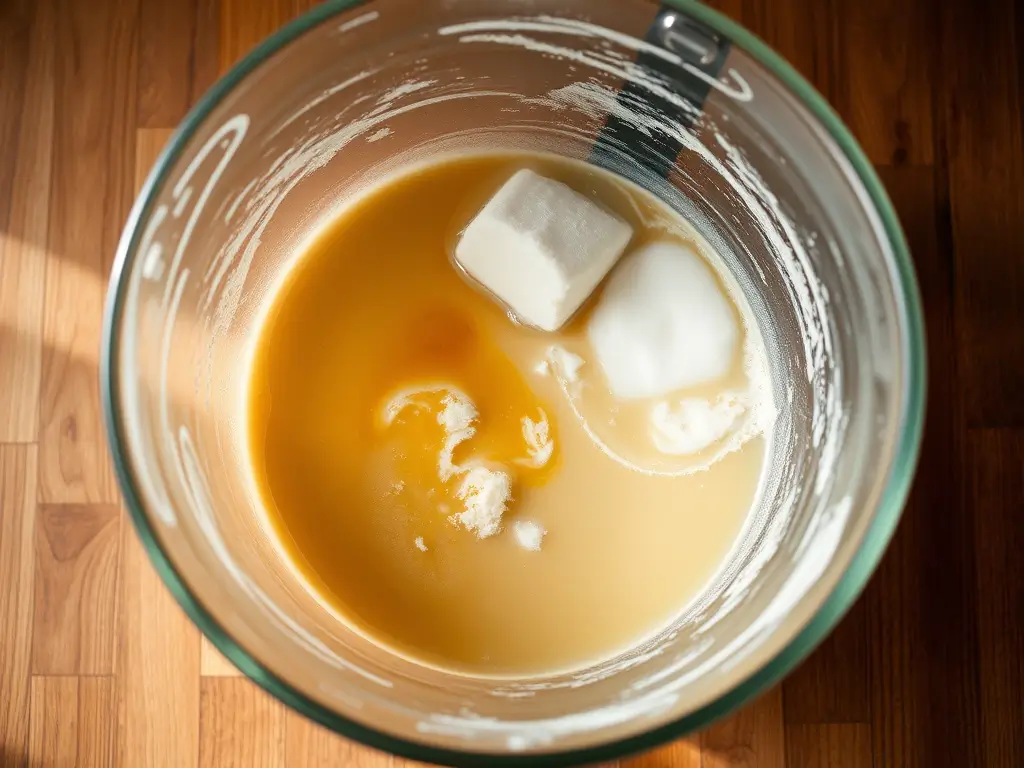
- Mix and Knead:
- Add flour, salt, and olive oil. Knead for 10 minutes. 💪

- First Rise:
- Place dough in a greased bowl, cover, and let it rise for 1-2 hours. ✨
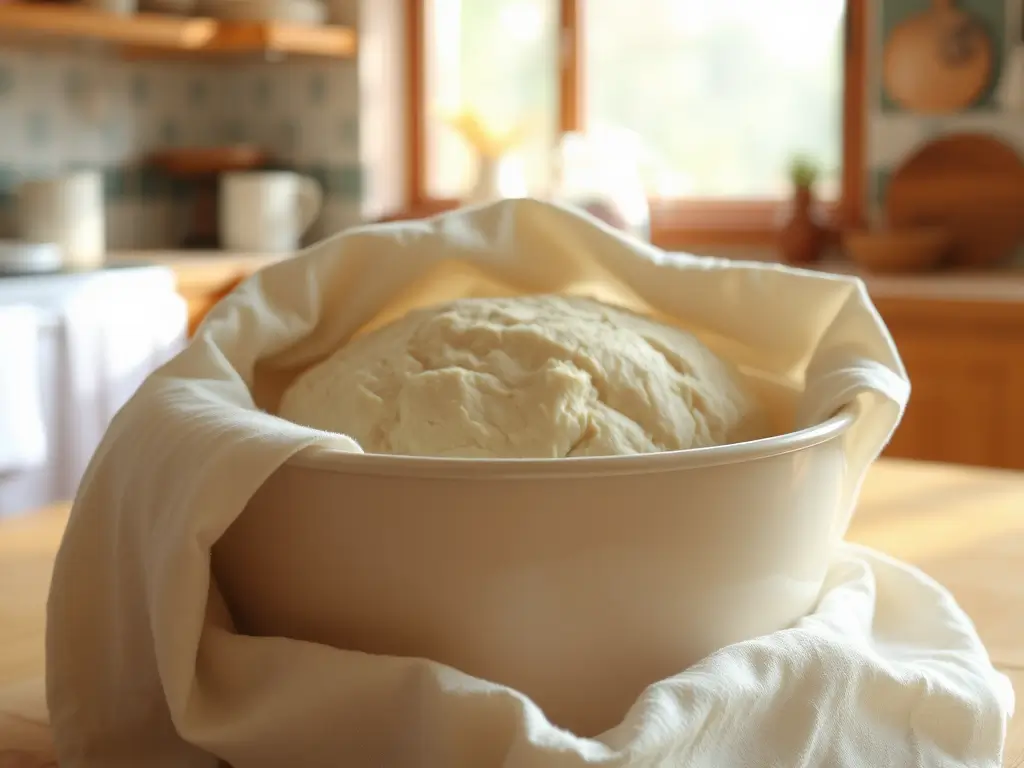
- Shape and Second Rise:
- Punch down the dough, shape into a loaf, and place in a greased pan.
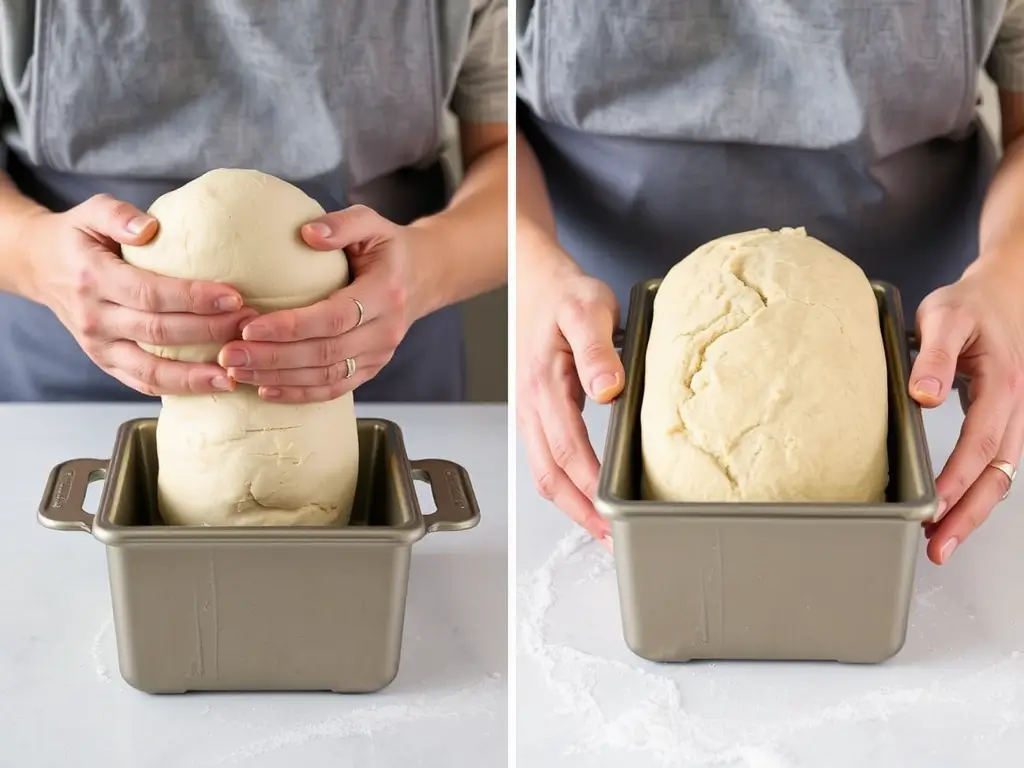
- Bake:
- Preheat oven to 375°F (190°C). Bake for 30-35 minutes until golden brown. 🔥
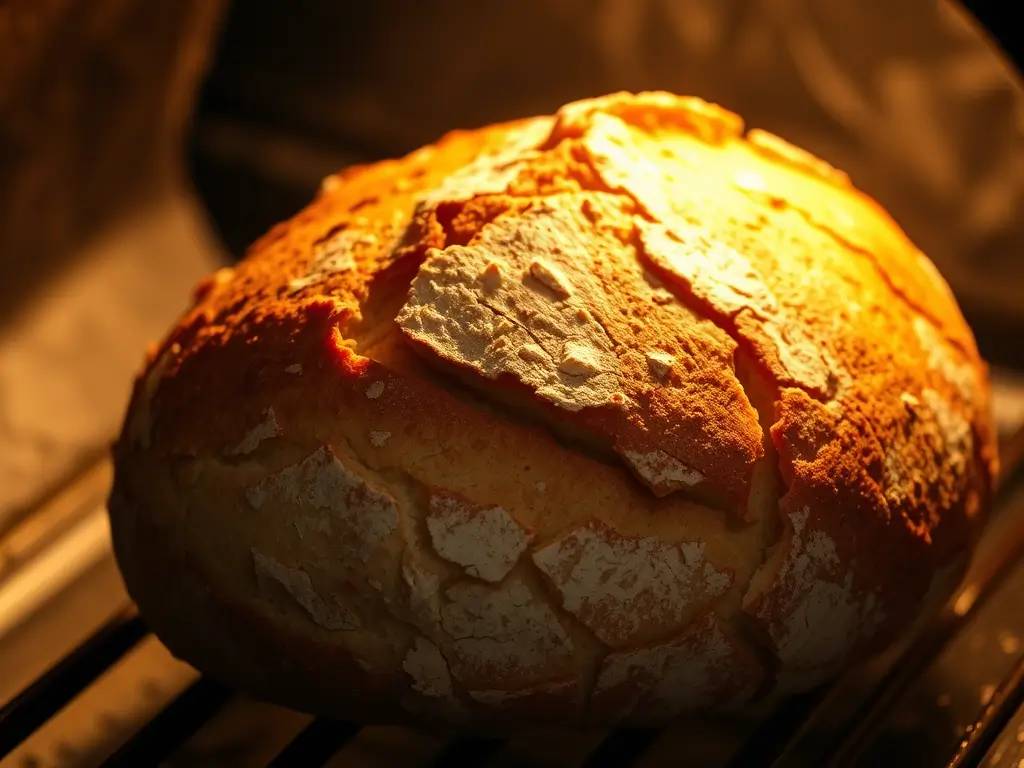
- Cool and Enjoy:
- Let it cool before slicing. Savor that first bite! 🍞
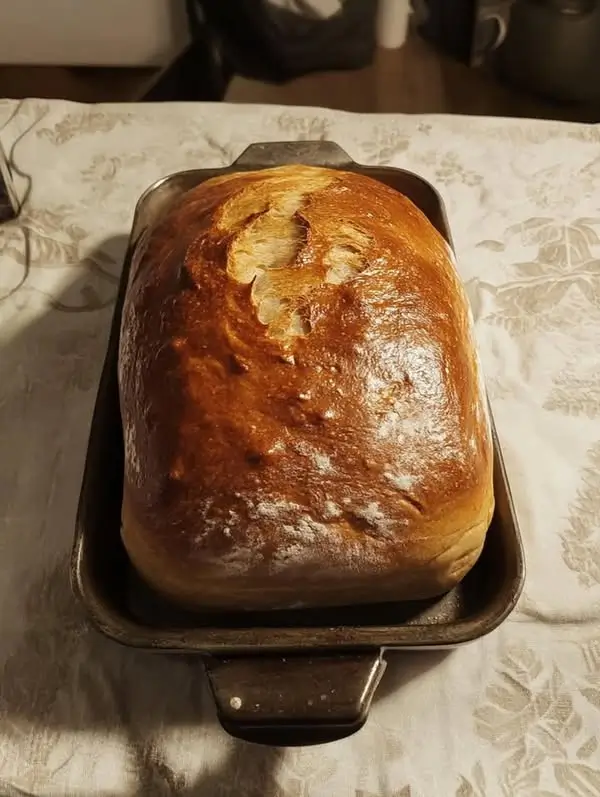
🌟 Discover the Secrets to Making Sourdough Starter Bread
Discover the secrets to baking the perfect sourdough bread that’s soft, airy, and absolutely irresistible.
🥄 1. The Right Flour Makes All the Difference
Choosing the right flour is crucial when crafting a flavorful sourdough bread recipe without starter. High-protein flour, such as bread flour or whole wheat flour, creates a stronger gluten network, giving your dough the strength to rise. If you’re exploring gluten free sourdough bread, opt for gluten-free flour blends with xanthan gum to provide structure. Keep in mind that gluten-free dough will behave differently, so adjusting water content and rise time is essential. Pro tip: Organic, unbleached flour is best for maintaining your starter’s health.
🥛 2. The Hydration Game
Achieving the perfect hydration level can make or break your sourdough starter bread. Wetter dough creates a more open crumb, while drier dough results in a denser loaf. Aim for a hydration level between 65-75% to strike the right balance. For those attempting gluten free sourdough bread, hydration levels may need to be slightly higher to compensate for the lack of gluten structure. Adjust water content based on the type of flour you’re using. Remember: Wetter dough is stickier but produces a more airy, artisan-style loaf.
🕒 3. The Patience Test
Patience is key when it comes to sourdough starter bread. Unlike quick-rise bread, this process takes time. Allowing your dough to ferment slowly gives wild yeast ample opportunity to develop deep, tangy flavors. Aim for a minimum of 8-12 hours for the bulk fermentation stage. For gluten free sourdough bread, extend the rise time slightly to ensure a good lift. The longer the ferment, the more flavorful the bread. Patience pays off—resist the urge to rush your dough.
💪 4. The Power of the Fold
Incorporating stretch and fold techniques during the bulk fermentation helps build dough strength and distribute gases evenly. This is especially important for doughs made with sourdough discard. With each fold, you’re encouraging the gluten structure to align, creating a strong dough that can trap air effectively. If you’re using sourdough discard bread or sourdough discard sandwich bread, fold gently to avoid deflating the dough. Think of it as giving your dough a little workout!
🌱 5. Understanding Sourdough Discard
Sourdough discard is the excess starter you remove during feeding. Rather than tossing it, transform it into delicious sourdough discard bread or even sourdough discard banana bread. Sourdough discard has a milder flavor and can be used in pancakes, crackers, and muffins. Keep in mind, discard still contains wild yeast, so it can add a subtle tang to any recipe. Don’t waste it—embrace the discard and get creative in the kitchen!
🍌 6. Sourdough Banana Bread: A Sweet Twist
Sourdough banana bread is a delectable way to use up sourdough discard. Combine ripe bananas, discard, and your favorite spices for a moist, slightly tangy loaf. This bread is rich in flavor and perfect for breakfast or as a midday snack. Want a more dessert-like twist? Add dark chocolate chips or a swirl of nut butter to the batter. If you’re avoiding gluten, use a gluten-free flour blend to make gluten free sourdough banana bread that’s just as soft and satisfying. A touch of cinnamon elevates the flavor profile, making it absolutely irresistible.
❄️ 7. How to Store Sourdough Bread
To keep your sourdough bread fresh, wrap it in a clean cloth or place it in a paper bag to maintain its crust. Avoid storing in plastic, as it traps moisture and can cause the crust to become chewy. For longer storage, freeze sourdough bread. Slice it first, then wrap each slice individually to make reheating easier. Wondering how to store sourdough bread if you made a large batch? Pop it in the freezer for up to 3 months. For a crispy crust, reheat in the oven at 350°F for 10 minutes.
🐶 8. Can Dogs Have Sourdough Bread?
While a small bite of sourdough bread isn’t likely to harm your dog, too much can cause digestive upset. Sourdough bread contains yeast, which can ferment in a dog’s stomach and lead to bloating or alcohol poisoning. Keep sourdough discard bread and sourdough banana bread out of reach, especially if they contain raisins, chocolate, or nuts. When in doubt, consult your vet before sharing your baked goods with your furry friend.
🧊 9. Can You Freeze Sourdough Bread?
Yes, you can freeze sourdough bread to extend its shelf life. To do so, let the loaf cool completely, then wrap it tightly in plastic wrap and a layer of aluminum foil. Label and date it, then pop it in the freezer. For best results, use within 3 months. Reheat frozen slices in the toaster or oven to revive that just-baked flavor. Freezing sourdough discard sandwich bread is a great way to have ready-to-toast slices whenever the craving strikes.
🎉 10. Conclusion: Your Sourdough Journey Starts Now
From understanding the role of sourdough discard to crafting the perfect sourdough banana bread, you’re now equipped with all the essentials to bake a sensational loaf. Remember, baking sourdough is a labor of love that requires patience and practice. Every loaf is a learning experience, and with each bake, you’ll discover new techniques and tricks. So, roll up your sleeves, get that starter bubbling, and let the magic of sourdough baking transform your kitchen into a haven of warm, crusty, flavorful bread. Happy baking!
🌟 Unleashing the Power of Sourdough Starter Bread: Mastering Texture, Flavor, and Shelf Life
🌼 The Science Behind Sourdough: Why It’s Unique
Sourdough bread is more than just a loaf; it’s a living, breathing ecosystem of wild yeast and lactic acid bacteria. Unlike conventional yeast-based bread, sourdough relies on natural fermentation, resulting in a deeper, more complex flavor. But what makes it so special? The slow fermentation process breaks down gluten, making it easier to digest for some people. However, it’s important to note that while the gluten content may be lower, it’s not a gluten free sourdough bread. If you’re wondering does sourdough bread have gluten?, the answer is yes, though the fermentation process can make it slightly more digestible for those with mild sensitivities. Still, for those with celiac disease or severe gluten intolerance, it’s best to opt for a dedicated gluten-free sourdough bread recipe.
🔥 Perfecting the Crust: The Secret to Artisan Bread
A crisp, crackling crust is the hallmark of a great sourdough loaf. Achieving it requires the right balance of steam and heat. Preheating your oven to 475°F (246°C) and baking with steam for the first 20 minutes helps the crust expand and set. If you’re using sourdough discard bread, don’t worry—you can still achieve that bakery-style crust. Want a more rustic, crunchy finish? Score the dough just before baking to allow steam to escape, creating a beautiful ear. And don’t forget to let your sourdough cool completely before slicing—cutting too soon can make the crumb gummy and dense.
🌱 Health Benefits of Sourdough: Beyond Just Bread
Sourdough bread is not just delicious—it’s packed with nutritional benefits. Thanks to the fermentation process, it has a lower glycemic index, making it a better option for those watching their blood sugar. The natural acids also help break down phytates, increasing mineral absorption. Curious about sourdough bread calories? A typical slice of sourdough contains around 80-100 calories, depending on the recipe and portion size. If you’re aiming for a healthier version, consider making sourdough discard sandwich bread, which can be lighter and less dense. And yes, you can freeze sourdough bread to preserve its freshness and nutrients for later use.
🍌 Creative Variations: From Sourdough Banana Bread to Discard Delights
One of the best things about sourdough baking is its versatility. Got leftover sourdough discard? Don’t toss it—turn it into a moist, flavorful sourdough discard banana bread. The natural acidity pairs perfectly with ripe bananas, creating a rich, tangy-sweet flavor profile. Prefer something savory? Transform the discard into sourdough discard sandwich bread, ideal for grilled cheese or PB&J. And if you’re feeling adventurous, experiment with add-ins like nuts, dried fruit, or chocolate chips. Pro tip: A touch of cinnamon can elevate your sourdough banana bread to a whole new level.
🐕 Can Dogs Eat Sourdough Bread? What You Need to Know
If you’re a pet parent, you might wonder, can dogs have sourdough bread? While a small nibble likely won’t harm them, it’s best to keep sourdough away from dogs. The fermentation process produces ethanol, which can be toxic to pets. Additionally, the yeast can continue to ferment in a dog’s stomach, causing bloating and discomfort. If your furry friend gets into sourdough bread or raw dough, consult your vet immediately. And remember, sourdough discard bread may contain ingredients like chocolate or raisins, which are toxic to dogs, so keep those loaves safely out of reach. Discover the secrets to baking the perfect sourdough starter bread that’s soft, airy, and absolutely irresistible.
For more recipes, check out our Sourdough Bread Recipe or Potato Flake Sourdough Bread !
If you enjoyed this recipe, we’d love to hear from you! Feel free to send us your thoughts or any questions you may have by visiting our Contact Us page
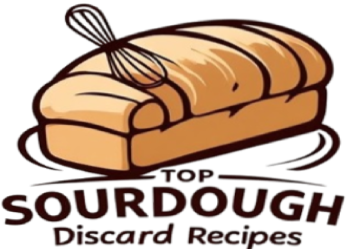
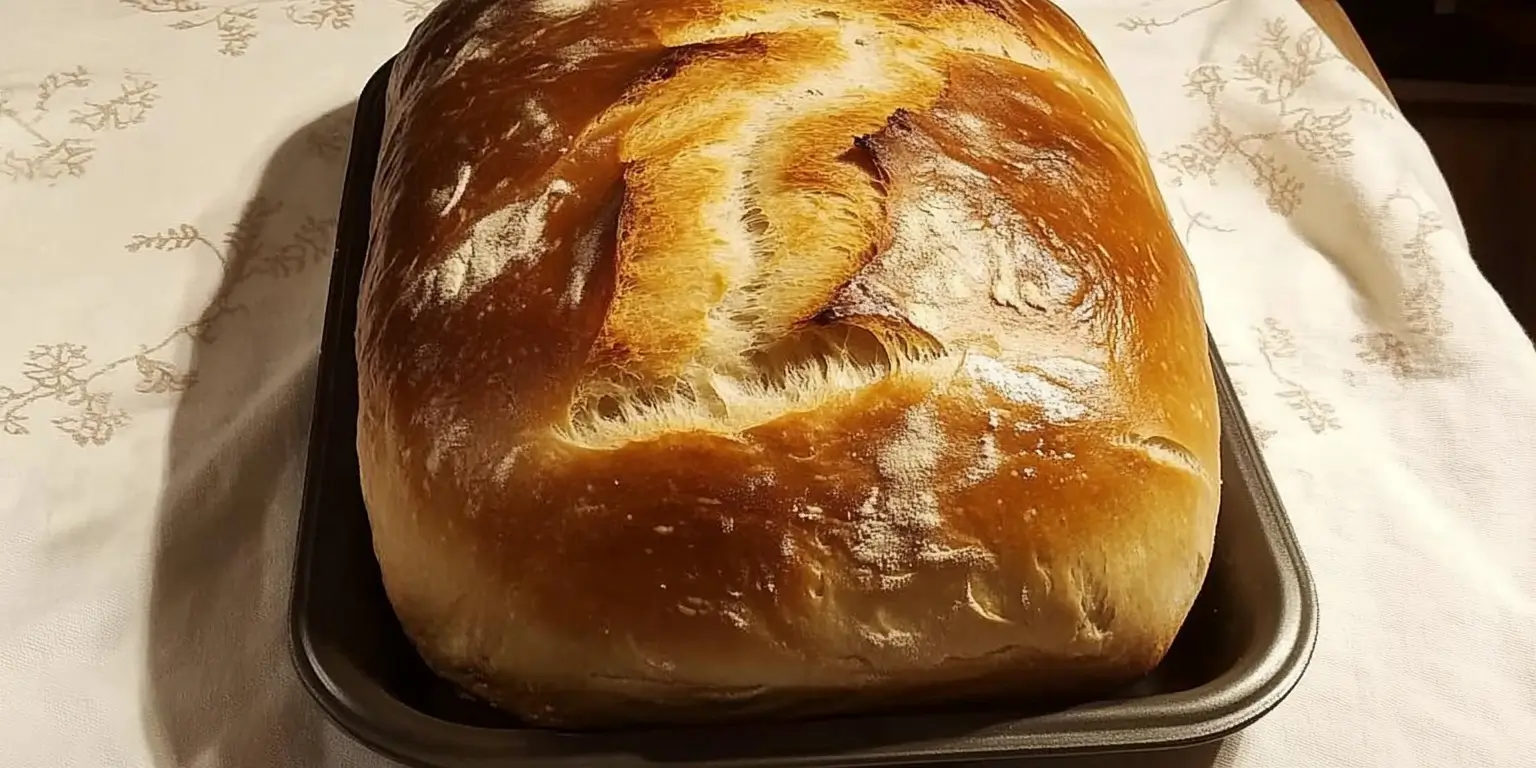
1 thought on “Sourdough Starter Bread Recipe: The Ultimate Beginner’s Guide”